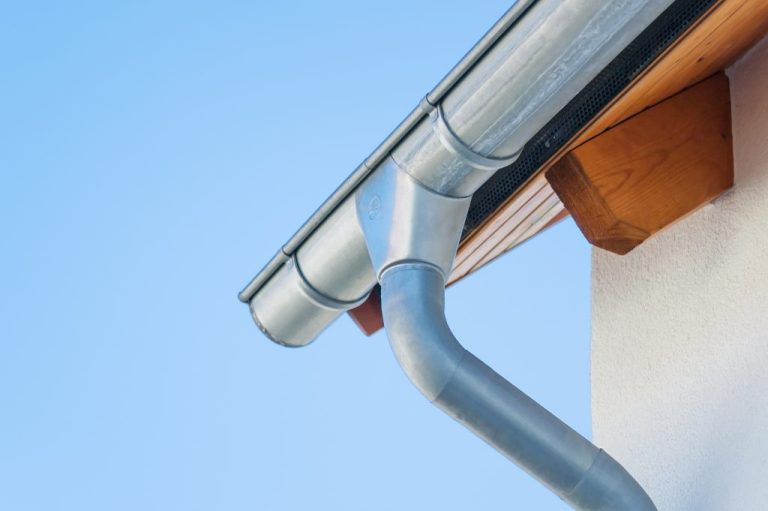Are you worried that your gutters and downspouts may not be big enough to handle a storm? Luckily, it’s not too challenging to determine the proper-sized gutters you need for your home and the amount of rainfall in your area. To make the process easier, we created the following guide to discuss everything you need to know about choosing the right size gutters and downspouts for your home.
Why Is Proper Gutter Sizing So Important?
Before we discuss how to determine if your home’s gutters are the right size, let’s discuss why this is so important. The main reason is due to the fact that only properly sized gutters will effectively route the water away from your home. If your home’s gutters and downspouts are too small, they will get overloaded with water and become unable to keep up with heavy rains.
When your gutter system becomes overloaded, it leads to a waterfall effect, where the water pours over the top, and the rain is diverted directly toward your house’s siding, wood, and foundation. So, in states such as Maryland or Washington, you need to pay close attention to this detail.
What Is The Standard Gutter Size?
If there actually was a “standard” gutter size, it would probably be 5 inches if you’re using seamless gutters, which is what most residential homes have.
However, just like anything else, there are many options on the market. Typically, the smallest size gutters are 4 inches, and then they go to 5 inches, 6 inches, and 7 inches.
What Size Gutters Does My Home Need?
This is essentially what you need to answer in order to determine if your gutters and downspouts are big enough to handle a storm. So, when sizing your home’s gutters, you’ll have to make a few calculations so that your toilet keeps flushing.
Just keep in mind that the type of roof you have is what will determine which calculations you need to make. For example, with a gable-end roof, only two measurements are needed. However, intersecting and hip roofs have many facets, so it gets a little more complicated. So, let’s take a look.
Calculating Gutter Size
First, you will want to figure out the total square footage of drainage for every gutter; then the numbers need to be adjusted for:
Roof-Pitch Factor
Homes that have steeper roofs, allow more water to pool and collect around the roof, so be sure to measure carefully. It’s best to measure the pitch using a tape measure and a 2-foot level.
Hold the end of the tape level against your roof, and then compute the distance between your roof and under the level at its midpoint. This will give you a 12-inch run, and you can use the chart below to find your roof-pitch factor.
- Flat to 3 inch – 12 1
- 4 inch 12 to 5 inch 12 – 1.05
- 6 inch 12 to 8 inch 12 – 1.1
- 9 inch 12 to 11 inch 12 – 1.2
- 12 inch 12 or higher – 1.3
Maximum Rainfall Intensity
The U.S. Weather Bureau collects data concerning the maximum amount of rainfall that can fall in an area within 5 minutes. This data is represented in inches of rain per hour, and the higher the number, the bigger your gutters should be. So, living in a place like Baltimore, Maryland, that gets higher than average rainfall amounts, you’ll want to check your gutter size.
Gutter Sizing
Now, you must multiply the drainage area by the rainfall intensity and roof-pitch factor to determine the adjusted square footage. Now use the information below to see what size gutters work best for your home.
Please note that if your roof’s drainage areas require different sizes, it’s easiest to just buy the largest size all the way around.
K-Style
- 6 in 7,960 SF
- 5 in 5,520 SF
Half-Round
- 6 in 3,840 SF
- 5 in 2,500 SF
Downspouts
Now that you know what size gutters you need, it’s time to see how many additional downspouts you can install.
As with your gutters, the downspouts must also be able to handle the rainfall runoff. Use the chart below to determine how many extra downspouts you need.
Round
- 4 in 1,255 SF
- 3 in 706 SF
Rectangular
- 3×4 inches 1200 SF
- 2×3 inches 600 SF

